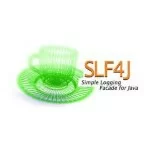Adding Gzip Compression in CXF APIs and Interceptors
Nowadays it has become mandatory to perform Gzipping to the APIs responses, due to huge amount of data we are sending in the response. It saves network bandwidth and delivery time, and of course space over the internet.
CXF provides an option to use the Gzip Compression in a number of ways.
- Blueprint
- Annotation
Blueprint:
1 2 3 4 5 6 | <bean id="gZipInterceptor" class="org.apache.cxf.transport.common.gzip.GZIPOutInterceptor" /> <jaxrs:server id="rsServer" address="/gZip"> <jaxrs:outInterceptors> <ref component-id="gZipInterceptor" /> </jaxrs:outInterceptors> </jaxrs:server> |
Annotation:
First you need to register the GZIPOutInterceptor in out interceptors list. For that you need to hook into CXF initialization classes.
01 02 03 04 05 06 07 08 09 10 11 12 13 14 15 16 17 18 19 20 | public class InterceptorManager extends AbstractFeature { private static final Logger LOGGER = Logger.getLogger( "simcore" ); private static final Interceptor< Message > GZIP = new GZIPOutInterceptor(); //private static final Interceptor< Message > GZIP = new GZIPOutInterceptor(512); /* (non-Javadoc) * @see org.apache.cxf.feature.AbstractFeature#initializeProvider(org.apache.cxf.interceptor.InterceptorProvider, org.apache.cxf.Bus) */ @Override protected void initializeProvider( InterceptorProvider provider, Bus bus ) { /** * Adding Gzip interceptor to all outbound requests/responses */ LOGGER.debug( " ############## Adding Gzip as OUT Interceptor ##############" ); provider.getOutInterceptors().add( GZIP ); }} |
GZIPOutInterceptor comes with an option to set the Threshold value as no of Bytes. If the response size is below this threshold value, then it will not be compressed. This will be extremely useful when we will be sending empty lists and status messages/codes only, since compressing those small responses will be an overhead at server side.
But there is another factor we must look into, which is the number of users requesting the response. So, set this value appropriately by thinking over all the cases that might appear.
1 | @GZIP |
Now we can use this annotation on any of our web-services controller to implement compression on all the APIs provided in that class.
01 02 03 04 05 06 07 08 09 10 11 12 | @WebService@Consumes ( { MediaType.TEXT_PLAIN, MediaType.APPLICATION_XML, MediaType.APPLICATION_JSON } )@Produces ( MediaType.APPLICATION_JSON )@GZIPpublic interface WebServicesController { @GET @Path ( "/myGzipData" ) @Produces ( { MediaType.APPLICATION_JSON } ) Response getZipData( );} |
Moreover we can set different parameters in Gzip annotation.
1 | @GZIP ( force = true, threshold = 512 ) |
| Reference: | Adding Gzip Compression in CXF APIs and Interceptors from our JCG partner Ch Shan Arshad at the Java My G.Friend blog. |






When implementing this solution, im getting this error when deploying my code on a weblogic server:
org.xml.sax.SAXParseException: cvc-complex-type.3.2.2: Attribute ‘component-id’ is not allowed to appear in element ‘ref’.